Special Report
Counties Where the American Dream Is Dead

Published:
Last Updated:

The expectation that children born in the United States will do better than their parents is the bedrock of the American dream. Rates of upward income mobility have fallen sharply in recent decades, however, and in some areas they are close to zero.
According to recent research on intergenerational mobility, the percentage of children who grow up to earn more than their parents is down from approximately 90% of children born in 1940, to 50% of children born in the 1980s.
[in-text-ad]
Economic research organization The Equality of Opportunity Project considered average incomes of 26-year olds raised in the bottom quartile in 2,973 U.S. counties. A 26-year old from this background who earns more than the national average for his age and income group is said to have managed upward income mobility.
The researchers found neighborhood environments have substantial effects on children’s long-term economic outcomes. The probability of earning in adulthood more than $26,090 — the average annual income for the bottom quartile nationally — goes down every year of childhood spent in nearly 1,000 counties. To highlight the substantial geographic variation on this pattern, 24/7 Wall St. reviewed the 50 counties where the average incomes lost are greatest.
Click here to see the counties where the American dream is dead.
Click here to see our methodology.
Children living in Oglala Lakota County, South Dakota have the worst odds of earning a decent wage in adulthood. The annual income a child in a low-income family is likely to make as an adult declines by 1.9% each year he or she spends in Oglala Lakota. At this rate, close to $500 is lost annually from the modest income a child might have earned growing up in a different neighborhood.
The areas that produce worse outcomes for low-income children have several economic characteristics in common. For example, poverty rates in all but a handful of these counties exceed the national poverty rate of 15.5%. In 19, the poverty rate exceeds 30%.
Thirteen of the 50 counties on this list are home to or overlap with American Indian reservations. This includes the top four counties, where the vast majority of residents identify as American Indian. Native Americans are one of the nation’s most economically disadvantaged populations. Unique business regulations, poor services and poor access to amenities, as well as housing challenges are among the limitations contributing to the exceptionally poor economic mobility in these areas.
In 2014, 28.3% of single-race American Indians and Alaskan Natives lived in poverty, almost double the national average poverty rate and the highest of any racial group.
Unsurprisingly, the counties where children have the best chance for success have below average poverty rates nearly without exception. Previous research has shown upward mobility is also strongly correlated with low segregation, low income inequality, high school quality, and family structure.
These are the counties where the American dream is dead.
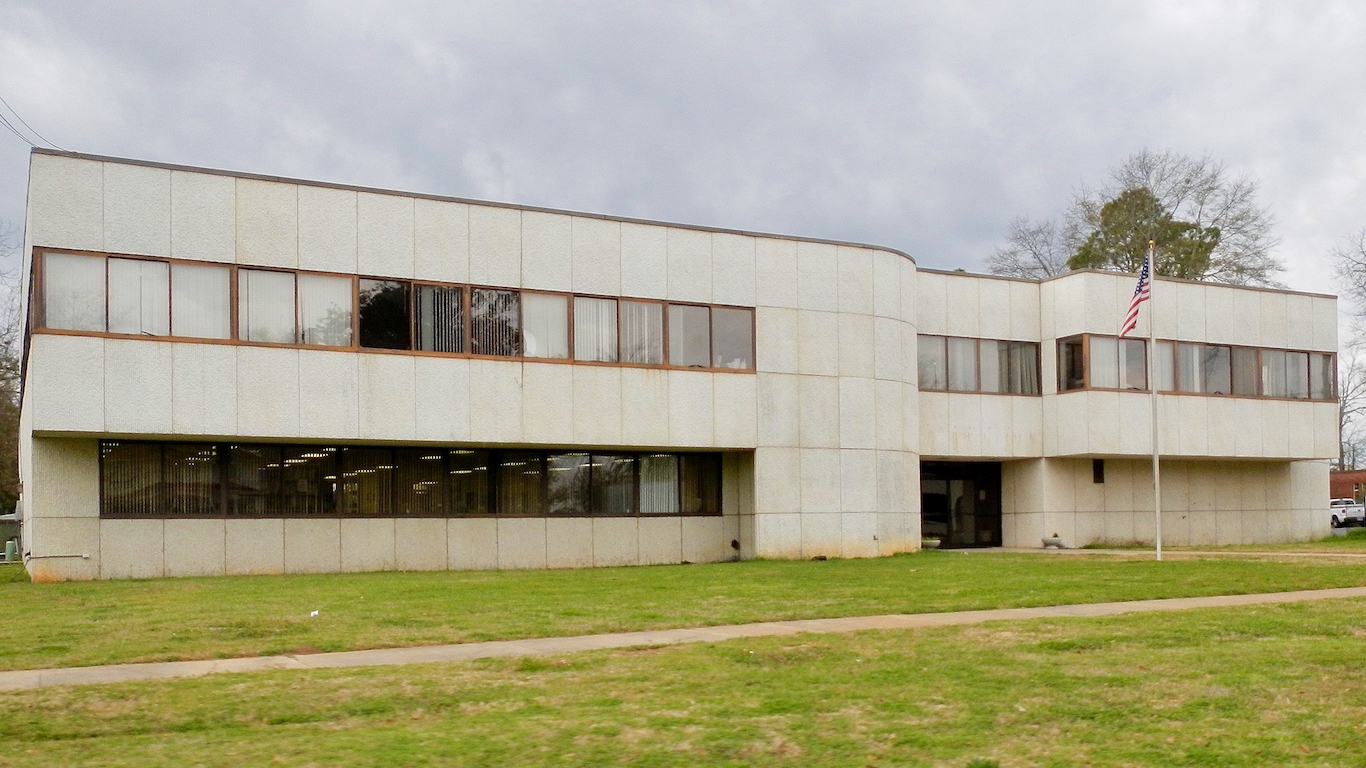
50. Macon County, Alabama
> Avg. income loss per year of childhood residence: -$200.96
> Household income per capita: $24,917
> Poverty rate: 32.8%
> Unemployment rate: 5.3%
[in-text-ad]

49. Early County, Georgia
> Avg. income loss per year of childhood residence: -$201.30
> Household income per capita: $30,163
> Poverty rate: 25.7%
> Unemployment rate: 4.7%

48. Fairfield County, South Carolina
> Avg. income loss per year of childhood residence: -$201.99
> Household income per capita: $28,030
> Poverty rate: 19.6%
> Unemployment rate: 8.4%

47. Rolette County, North Dakota
> Avg. income loss per year of childhood residence: -$202.12
> Household income per capita: $22,565
> Poverty rate: 31.0%
> Unemployment rate: 8.0%
[in-text-ad-2]

46. Atlantic County, New Jersey
> Avg. income loss per year of childhood residence: -$202.63
> Household income per capita: $38,869
> Poverty rate: 10.5%
> Unemployment rate: 4.8%
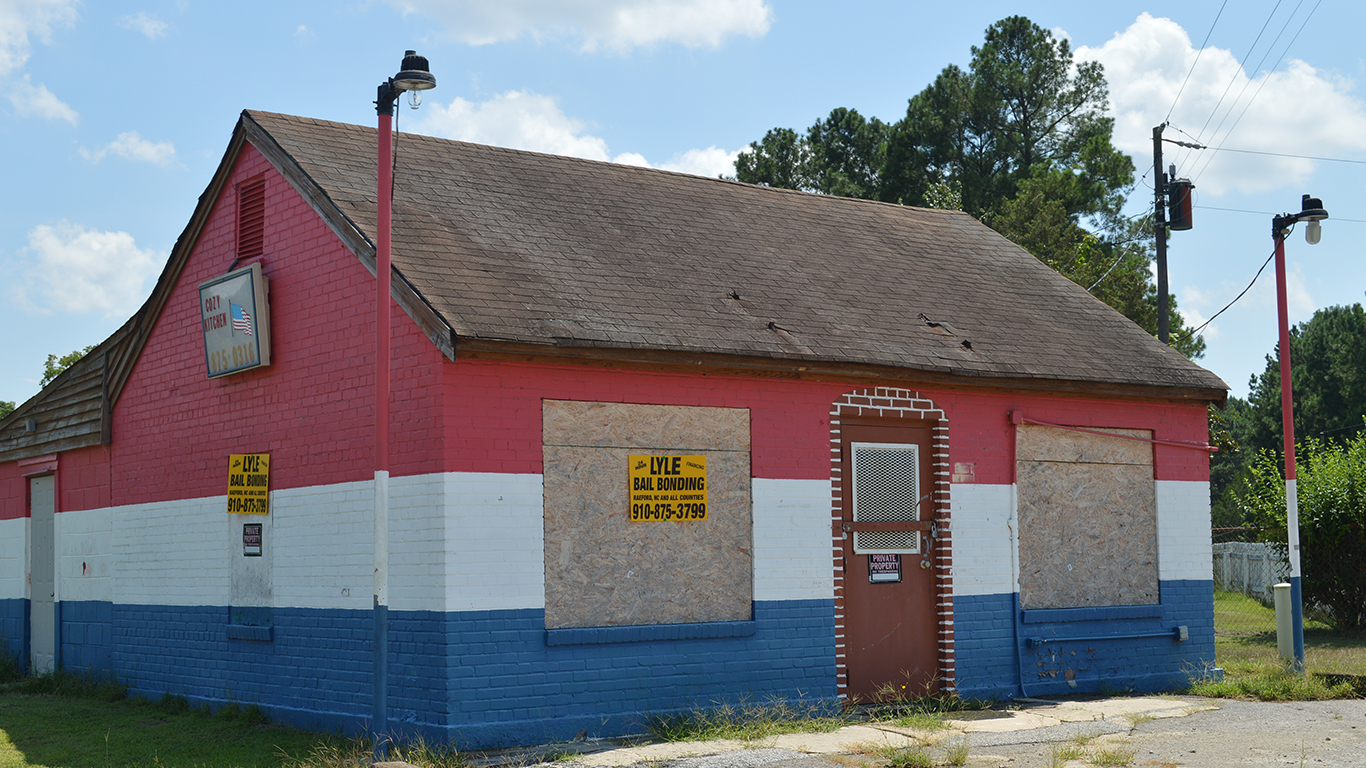
45. Hoke County, North Carolina
> Avg. income loss per year of childhood residence: -$202.99
> Household income per capita: $24,807
> Poverty rate: 17.7%
> Unemployment rate: 6.7%
[in-text-ad]

44. East Baton Rouge County, Louisiana
> Avg. income loss per year of childhood residence: -$203.05
> Household income per capita: $35,064
> Poverty rate: 17.9%
> Unemployment rate: 4.9%

43. Spalding County, Georgia
> Avg. income loss per year of childhood residence: -$203.40
> Household income per capita: $31,155
> Poverty rate: 15.5%
> Unemployment rate: 4.7%

42. Greene County, Alabama
> Avg. income loss per year of childhood residence: -$203.65
> Household income per capita: $27,644
> Poverty rate: 34.3%
> Unemployment rate: 6.5%
[in-text-ad-2]
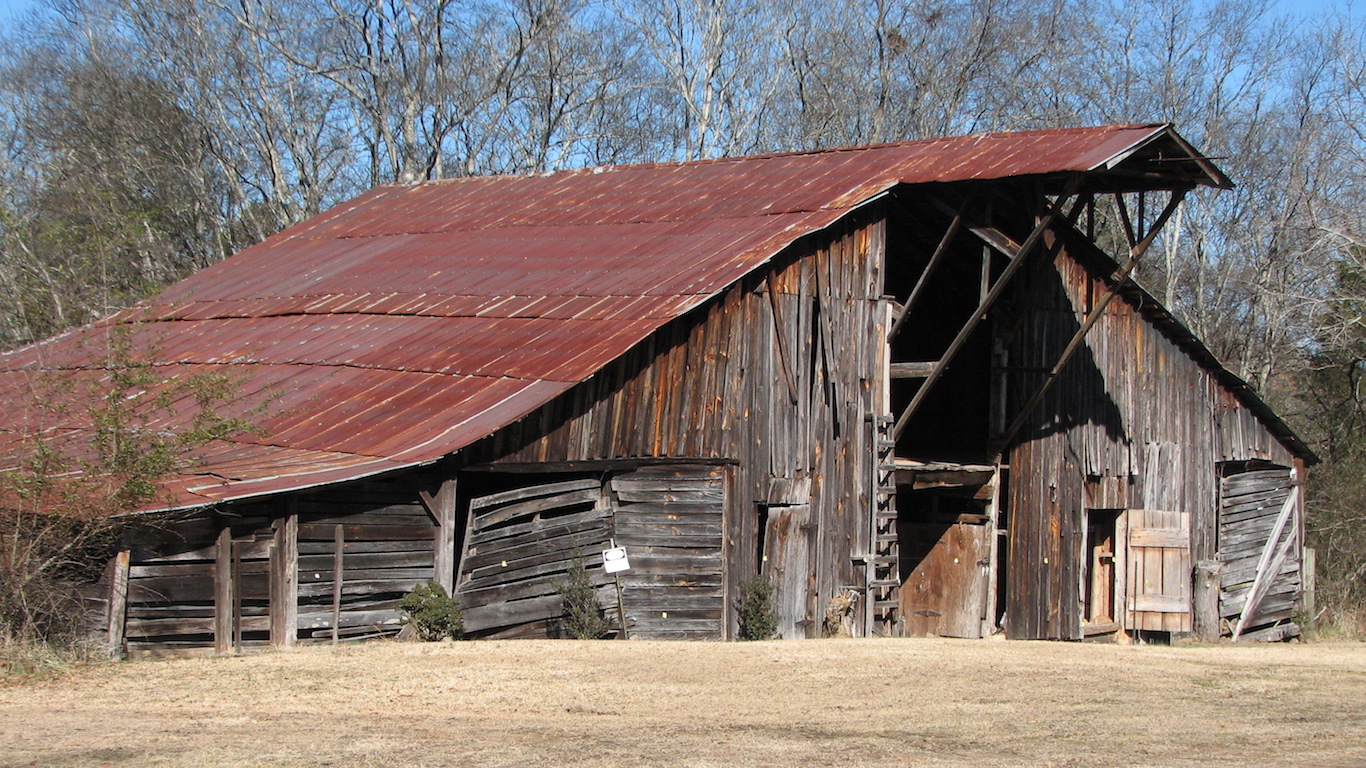
41. Baldwin County, Georgia
> Avg. income loss per year of childhood residence: -$204.14
> Household income per capita: $26,337
> Poverty rate: 16.8%
> Unemployment rate: 4.4%

40. Guilford County, North Carolina
> Avg. income loss per year of childhood residence: -$204.60
> Household income per capita: $41,339
> Poverty rate: 10.6%
> Unemployment rate: 5.1%
[in-text-ad]
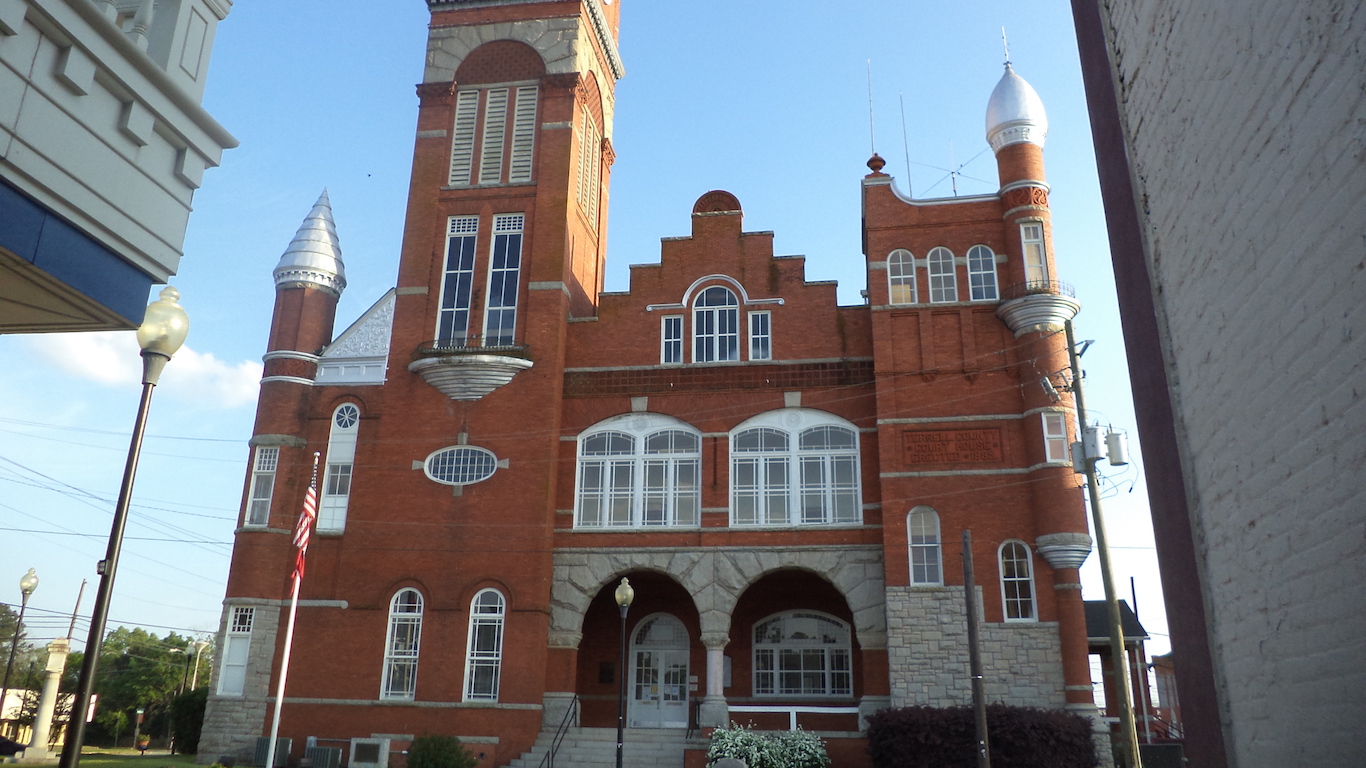
39. Terrell County, Georgia
> Avg. income loss per year of childhood residence: -$204.83
> Household income per capita: $26,851
> Poverty rate: 28.6%
> Unemployment rate: 6.2%

38. Crittenden County, Arkansas
> Avg. income loss per year of childhood residence: -$206.17
> Household income per capita: $27,744
> Poverty rate: 25.3%
> Unemployment rate: 5.0%
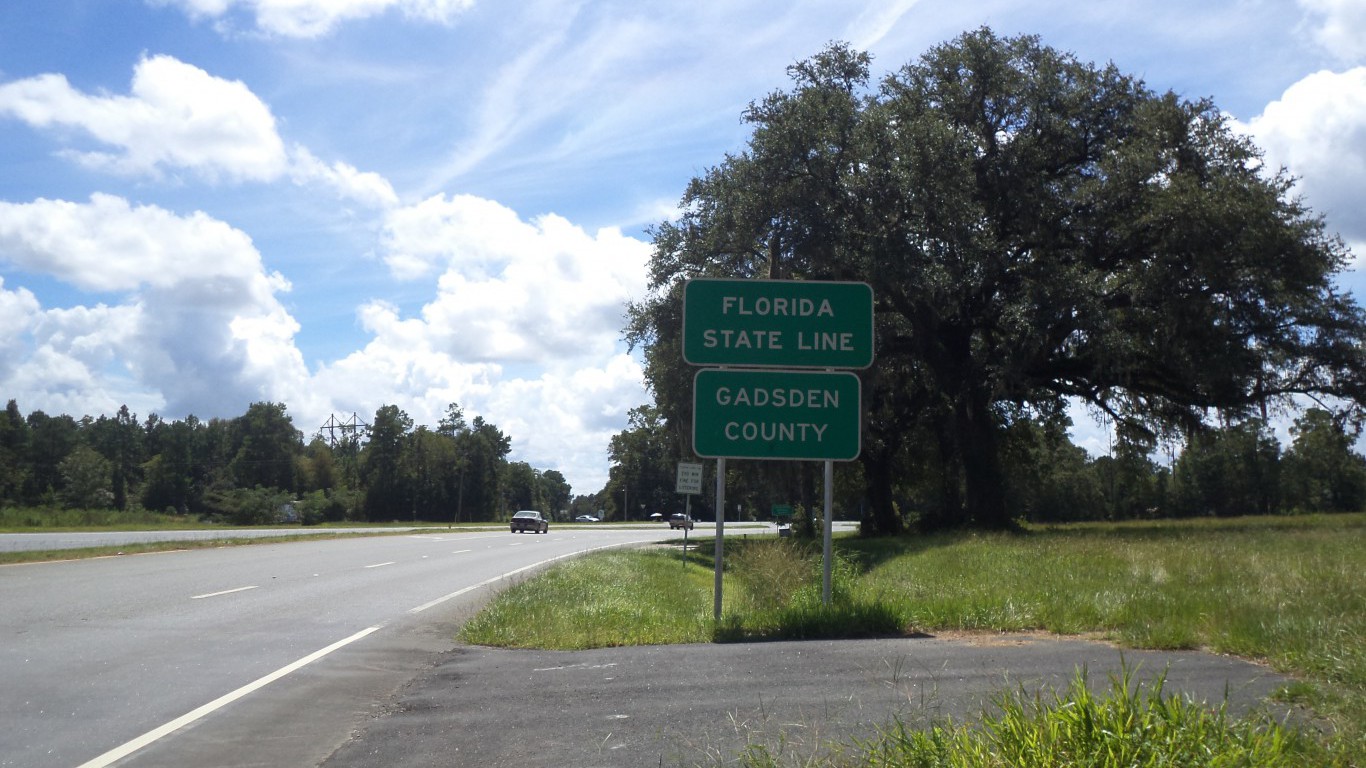
37. Gadsden County, Florida
> Avg. income loss per year of childhood residence: -$208.12
> Household income per capita: $25,763
> Poverty rate: 19.9%
> Unemployment rate: 4.8%
[in-text-ad-2]

36. Sumter County, Georgia
> Avg. income loss per year of childhood residence: -$208.25
> Household income per capita: $28,432
> Poverty rate: 21.4%
> Unemployment rate: 5.6%
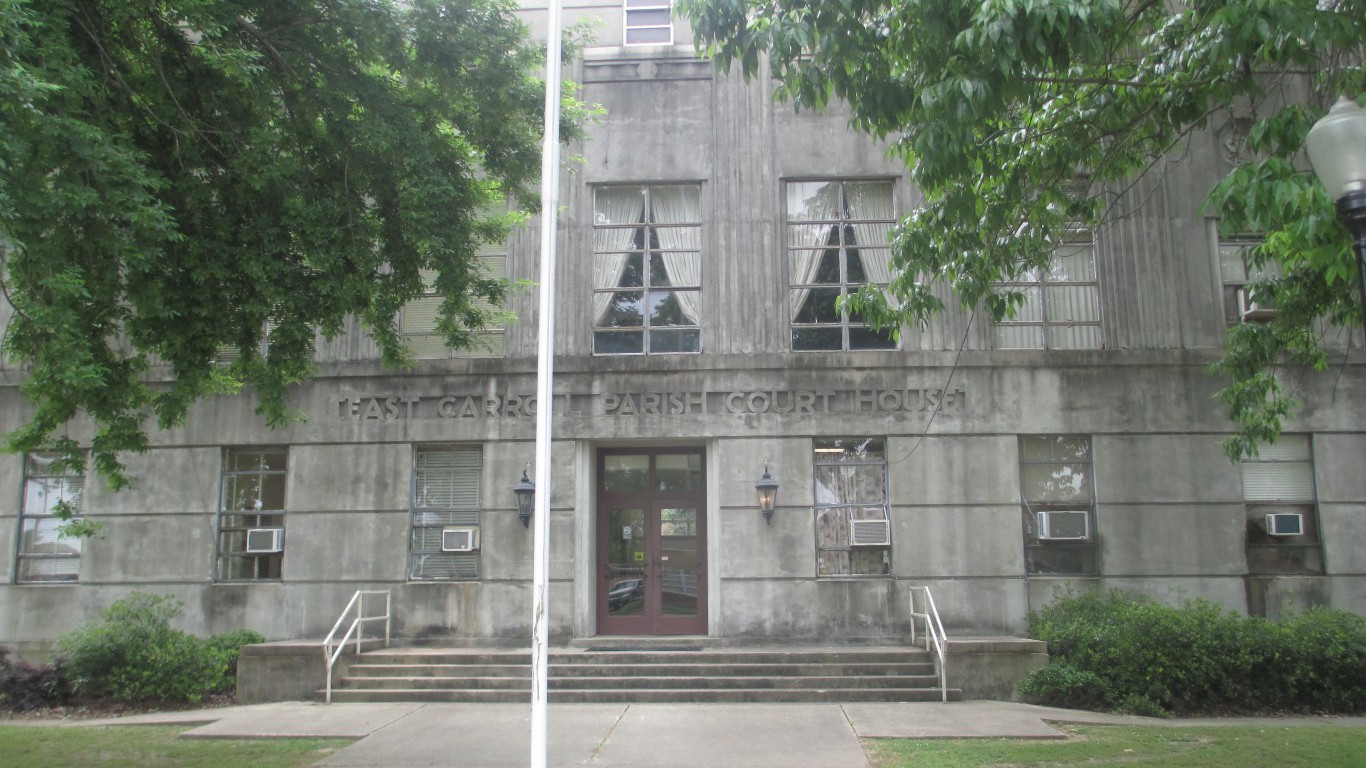
35. East Carroll County, Louisiana
> Avg. income loss per year of childhood residence: -$209.72
> Household income per capita: $18,062
> Poverty rate: 40.5%
> Unemployment rate: 11.2%
[in-text-ad]

34. Robeson County, North Carolina
> Avg. income loss per year of childhood residence: -$212.29
> Household income per capita: $24,221
> Poverty rate: 22.8%
> Unemployment rate: 9.9%
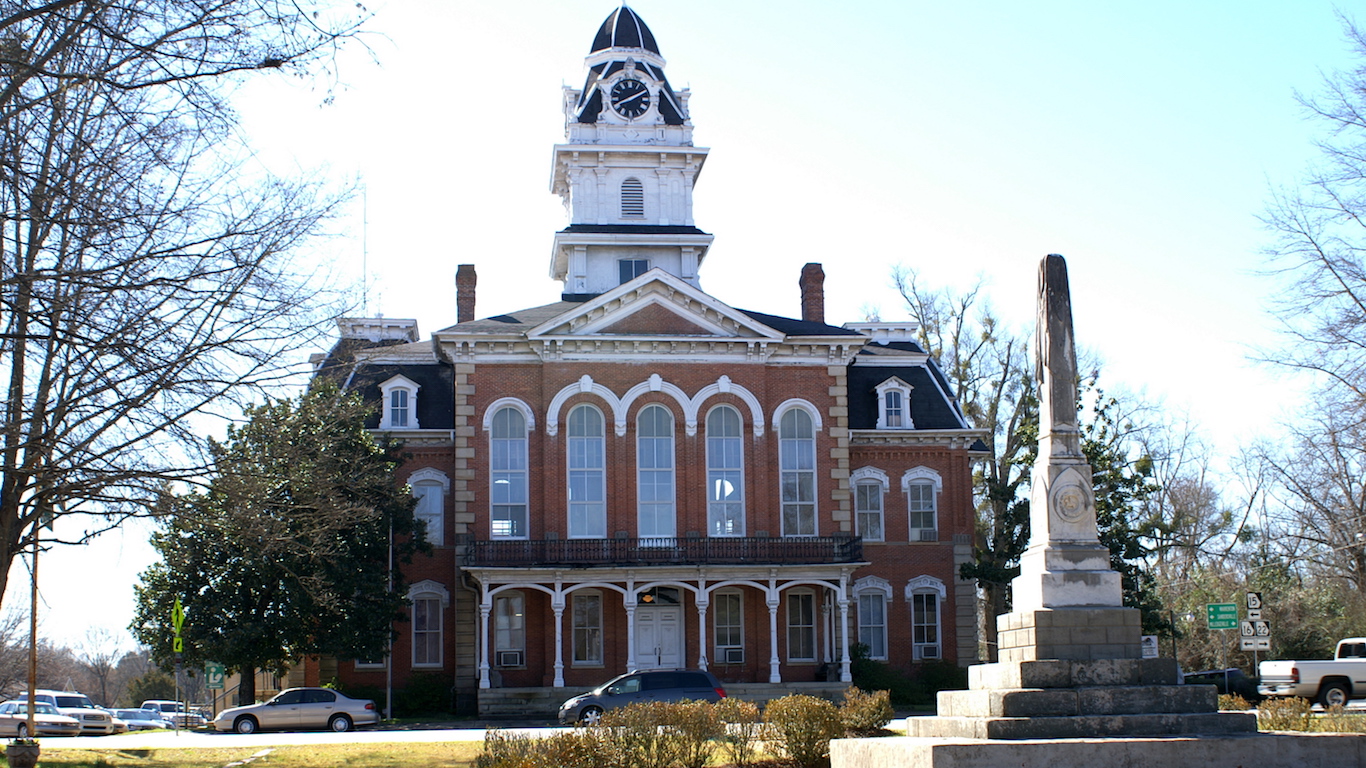
33. Hancock County, Georgia
> Avg. income loss per year of childhood residence: -$213.90
> Household income per capita: $17,928
> Poverty rate: 29.4%
> Unemployment rate: 9.2%
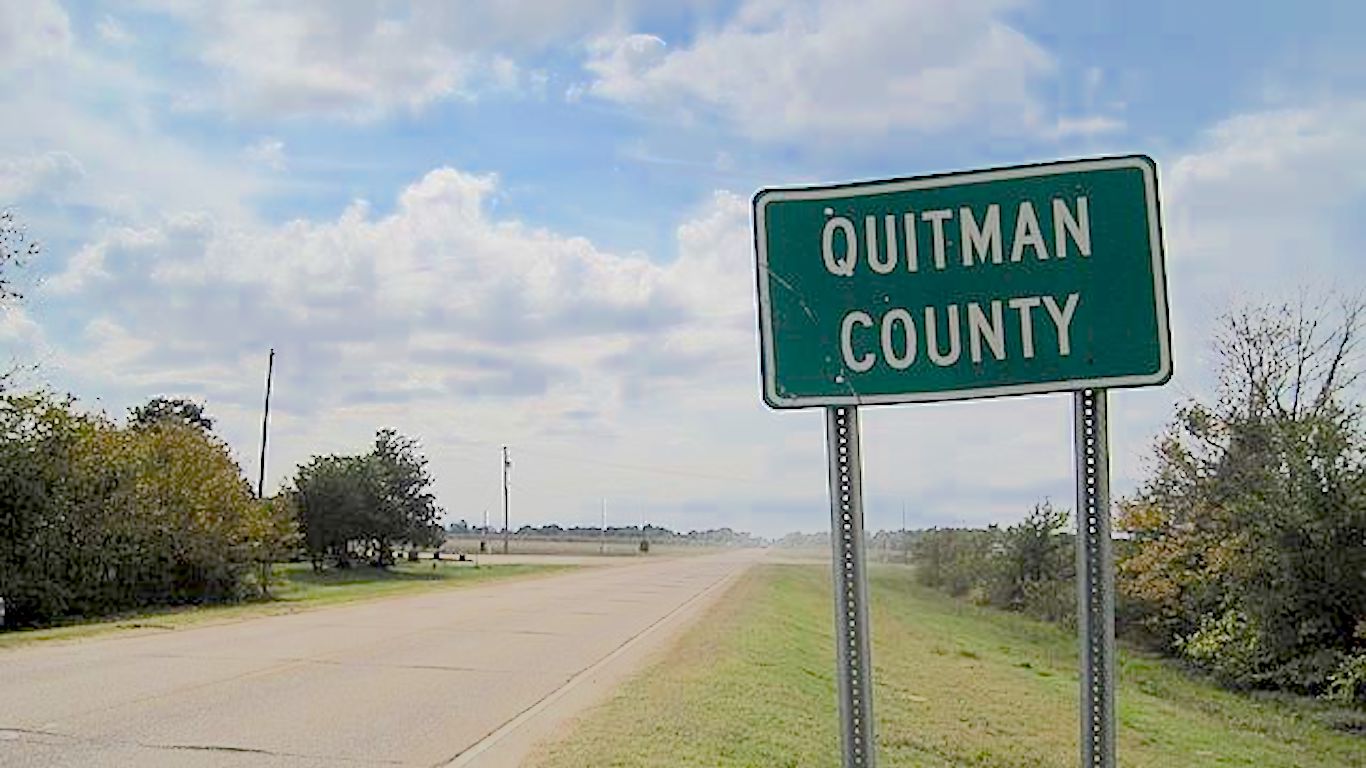
32. Quitman County, Mississippi
> Avg. income loss per year of childhood residence: -$214.07
> Household income per capita: $22,166
> Poverty rate: 33.1%
> Unemployment rate: 8.4%
[in-text-ad-2]
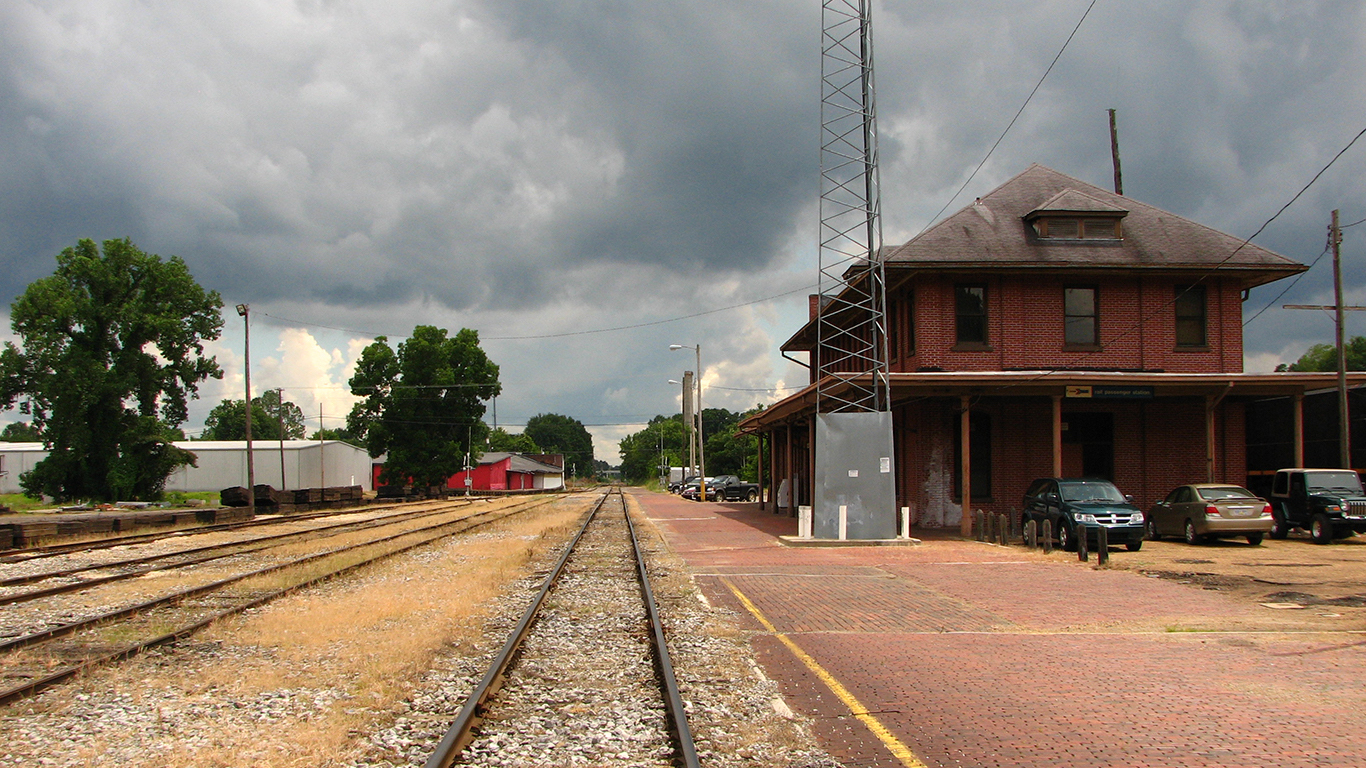
31. Grenada County, Mississippi
> Avg. income loss per year of childhood residence: -$215.29
> Household income per capita: $26,818
> Poverty rate: 20.9%
> Unemployment rate: 6.3%

30. St Louis City County, Missouri
> Avg. income loss per year of childhood residence: -$216.00
> Household income per capita: $30,072
> Poverty rate: 24.6%
> Unemployment rate: 6.7%
[in-text-ad]
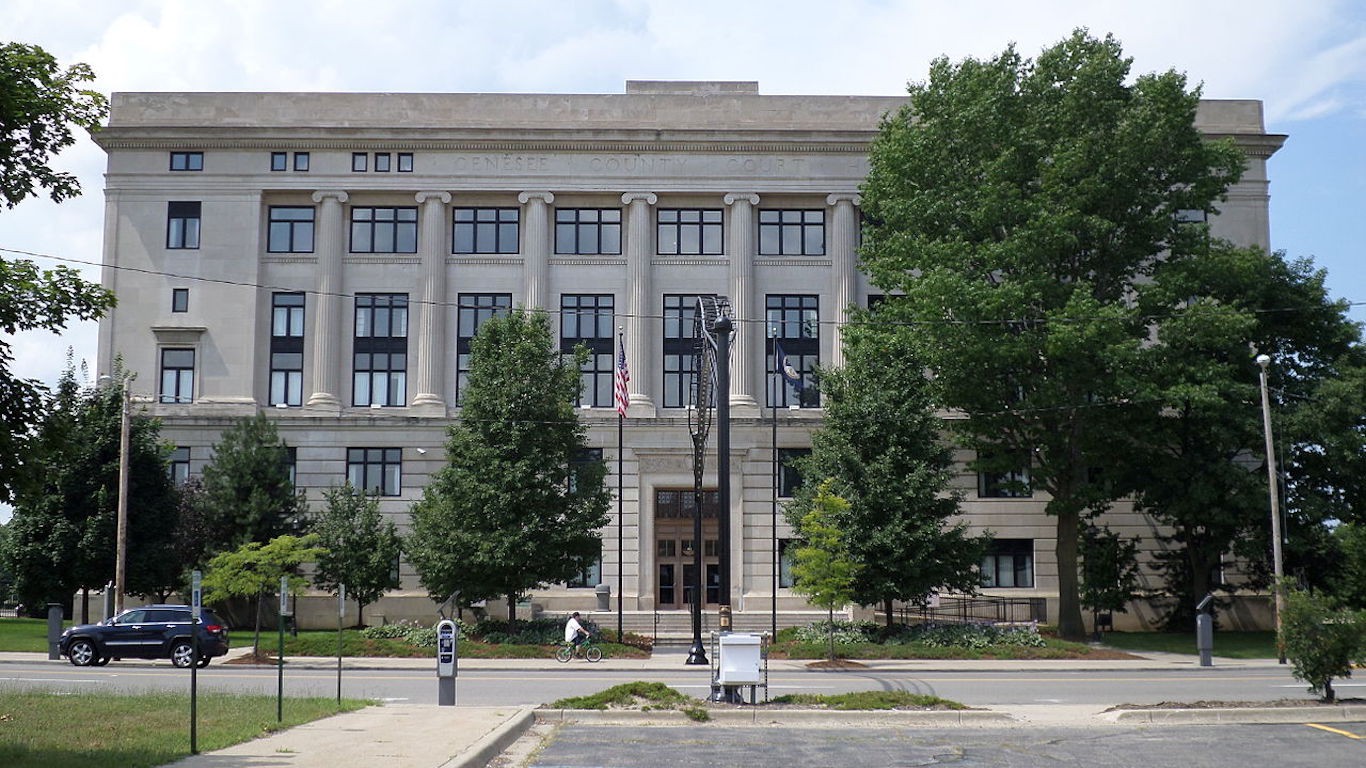
29. Genesee County, Michigan
> Avg. income loss per year of childhood residence: -$217.08
> Household income per capita: $38,963
> Poverty rate: 13.1%
> Unemployment rate: 6.0%
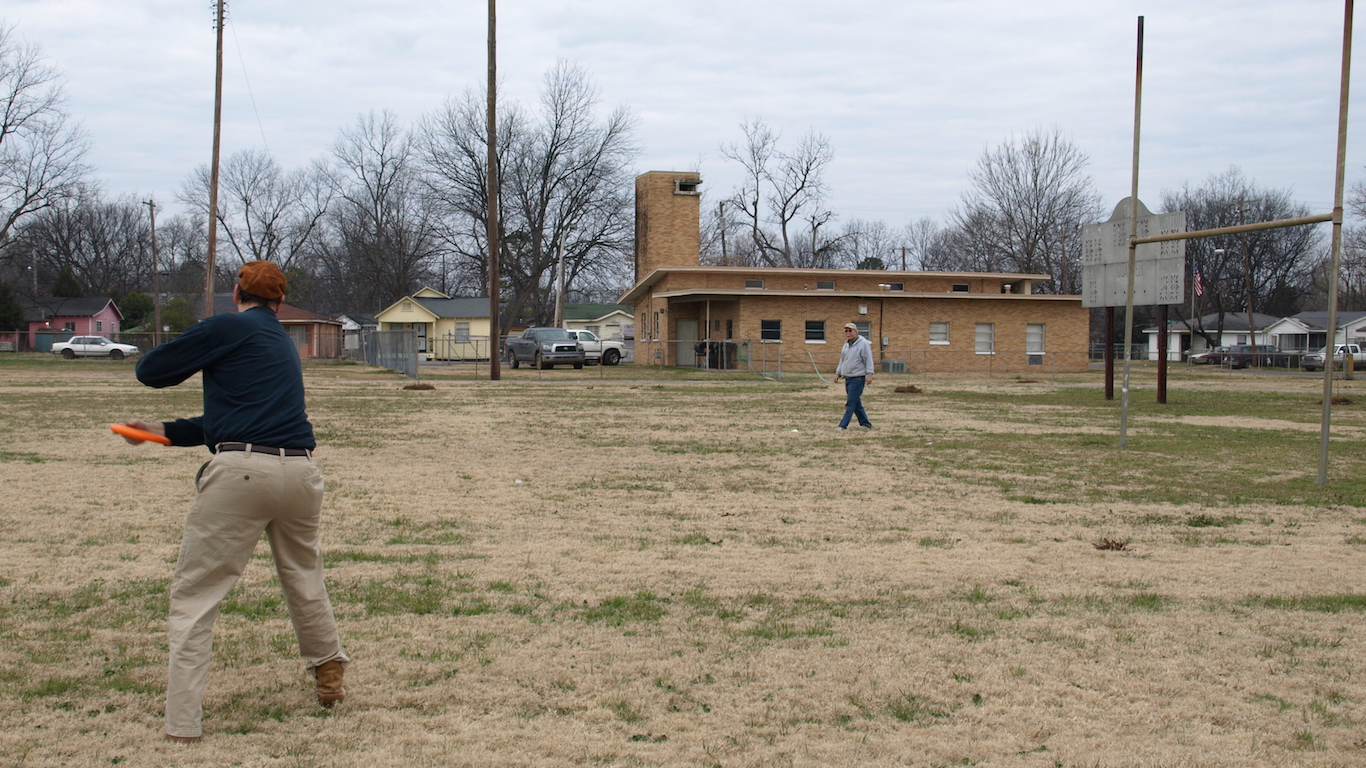
28. Washington County, Mississippi
> Avg. income loss per year of childhood residence: -$217.50
> Household income per capita: $26,530
> Poverty rate: 29.2%
> Unemployment rate: 9.1%
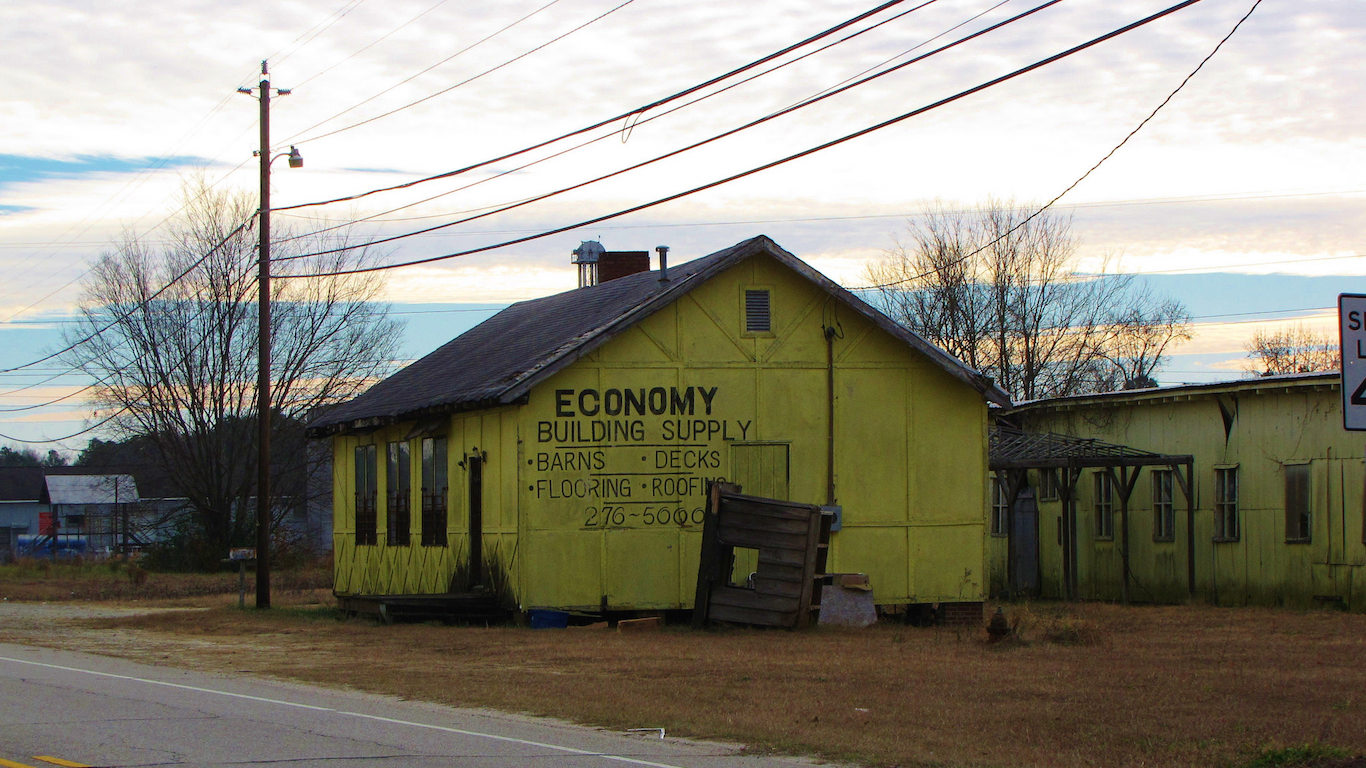
27. Scotland County, North Carolina
> Avg. income loss per year of childhood residence: -$218.68
> Household income per capita: $29,071
> Poverty rate: 20.6%
> Unemployment rate: 9.4%
[in-text-ad-2]

26. Oktibbeha County, Mississippi
> Avg. income loss per year of childhood residence: -$219.02
> Household income per capita: $24,040
> Poverty rate: 28.2%
> Unemployment rate: 4.8%
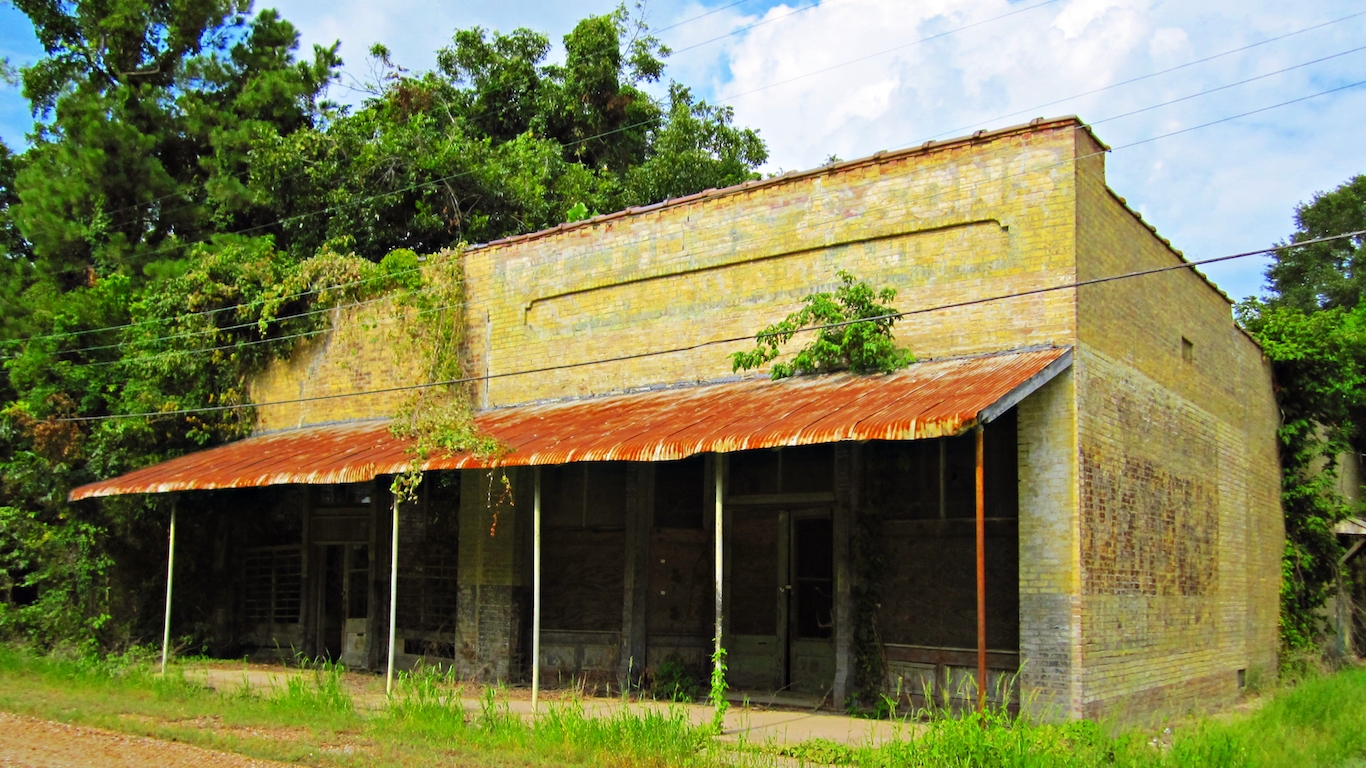
25. Bolivar County, Mississippi
> Avg. income loss per year of childhood residence: -$223.01
> Household income per capita: $22,311
> Poverty rate: 33.3%
> Unemployment rate: 7.1%
[in-text-ad]
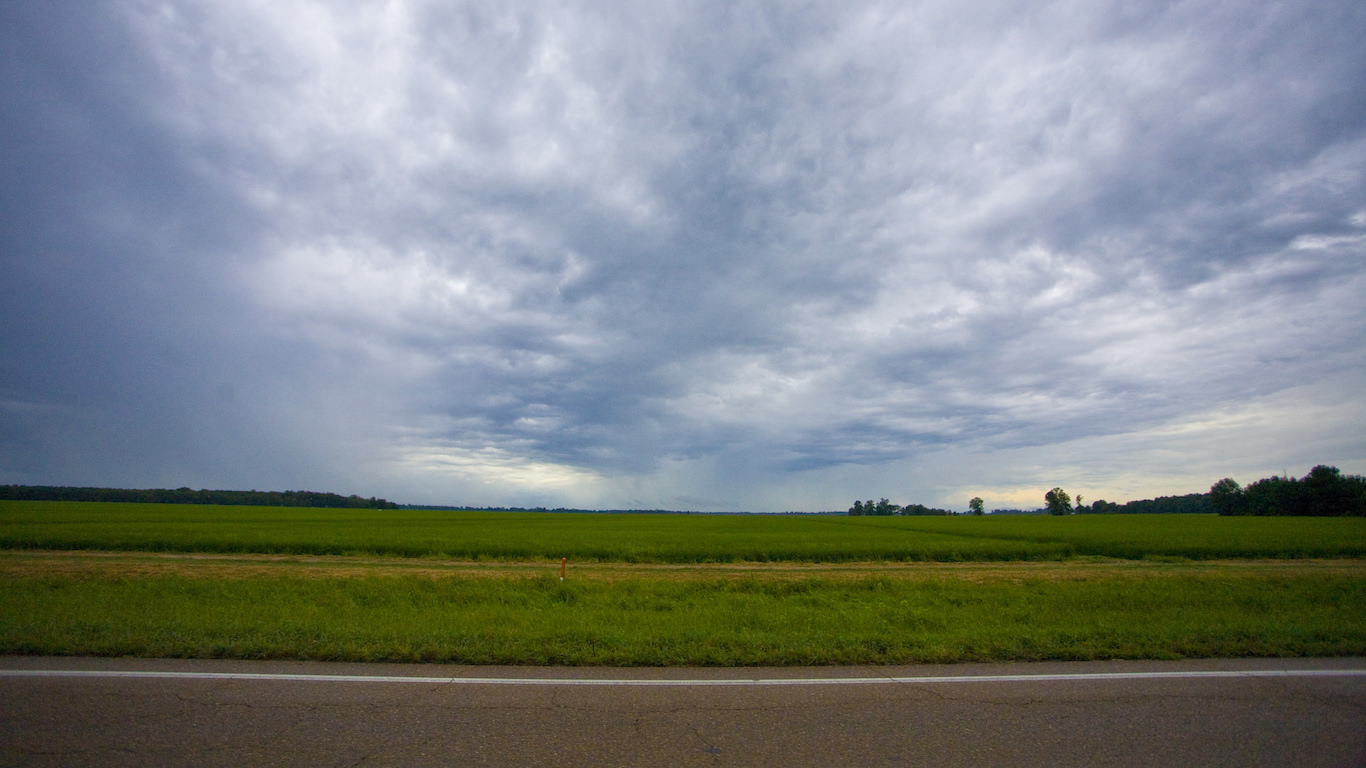
24. Sunflower County, Mississippi
> Avg. income loss per year of childhood residence: -$228.02
> Household income per capita: $18,895
> Poverty rate: 30.0%
> Unemployment rate: 10.6%

23. Allendale County, South Carolina
> Avg. income loss per year of childhood residence: -$228.74
> Household income per capita: $21,262
> Poverty rate: 34.5%
> Unemployment rate: 6.1%
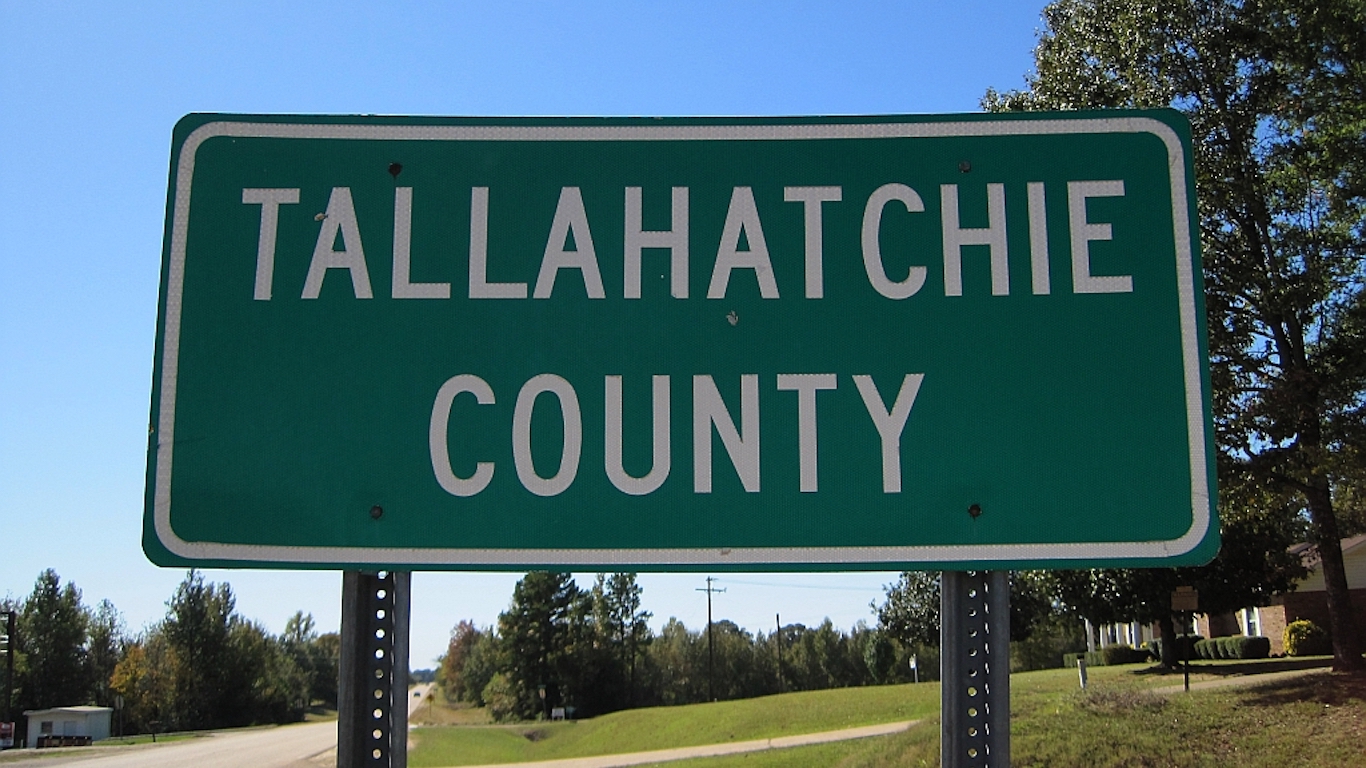
22. Tallahatchie County, Mississippi
> Avg. income loss per year of childhood residence: -$229.69
> Household income per capita: $21,421
> Poverty rate: 32.2%
> Unemployment rate: 9.1%
[in-text-ad-2]

21. Nome County, Alaska
> Avg. income loss per year of childhood residence: -$229.78
> Household income per capita: $29,589
> Poverty rate: 17.4%
> Unemployment rate: 9.5%
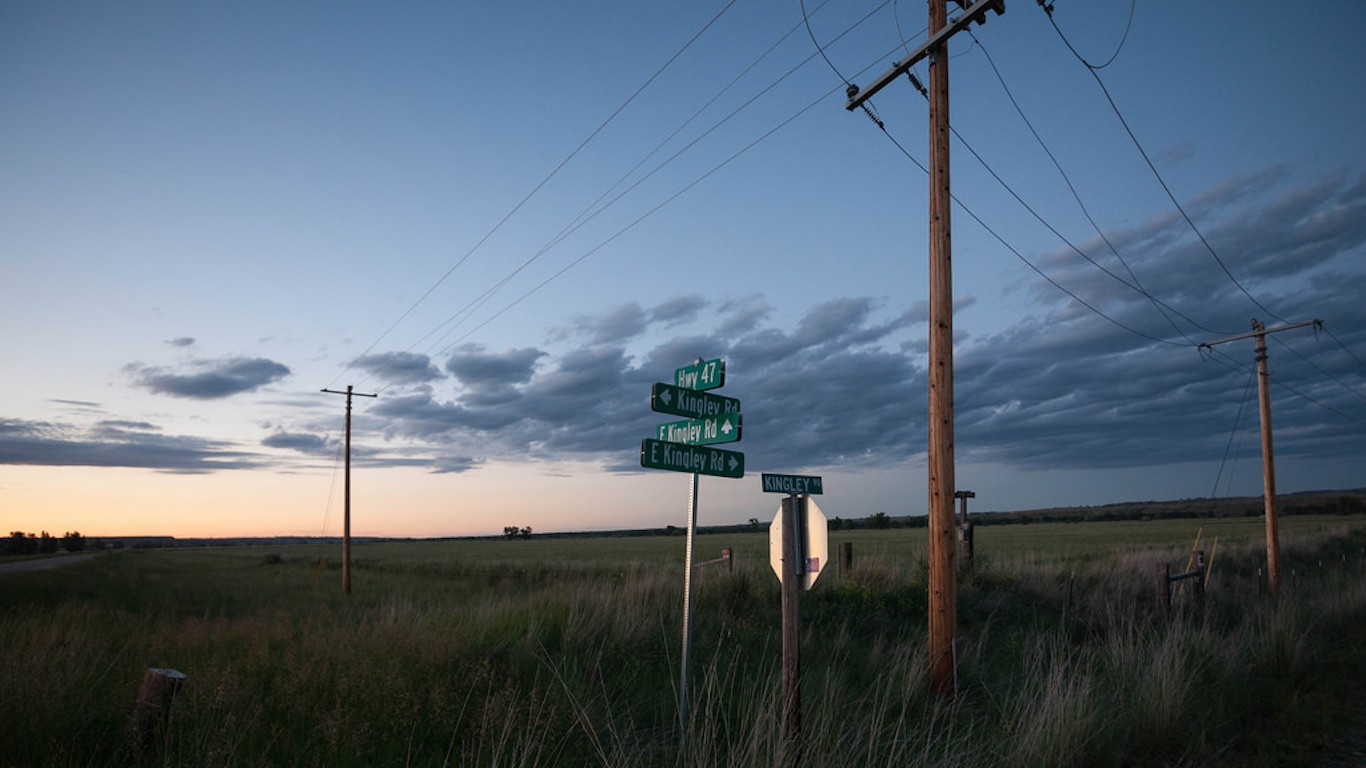
20. Big Horn County, Montana
> Avg. income loss per year of childhood residence: -$230.08
> Household income per capita: $20,646
> Poverty rate: 29.2%
> Unemployment rate: 11.7%
[in-text-ad]

19. Roanoke City County, Virginia
> Avg. income loss per year of childhood residence: -$233.10
> Household income per capita: $34,745
> Poverty rate: 15.9%
> Unemployment rate: 3.5%

18. Dewey County, South Dakota
> Avg. income loss per year of childhood residence: -$234.61
> Household income per capita: $19,529
> Poverty rate: 33.6%
> Unemployment rate: 9.3%

17. Hinds County, Mississippi
> Avg. income loss per year of childhood residence: -$234.66
> Household income per capita: $32,627
> Poverty rate: 19.9%
> Unemployment rate: 4.9%
[in-text-ad-2]
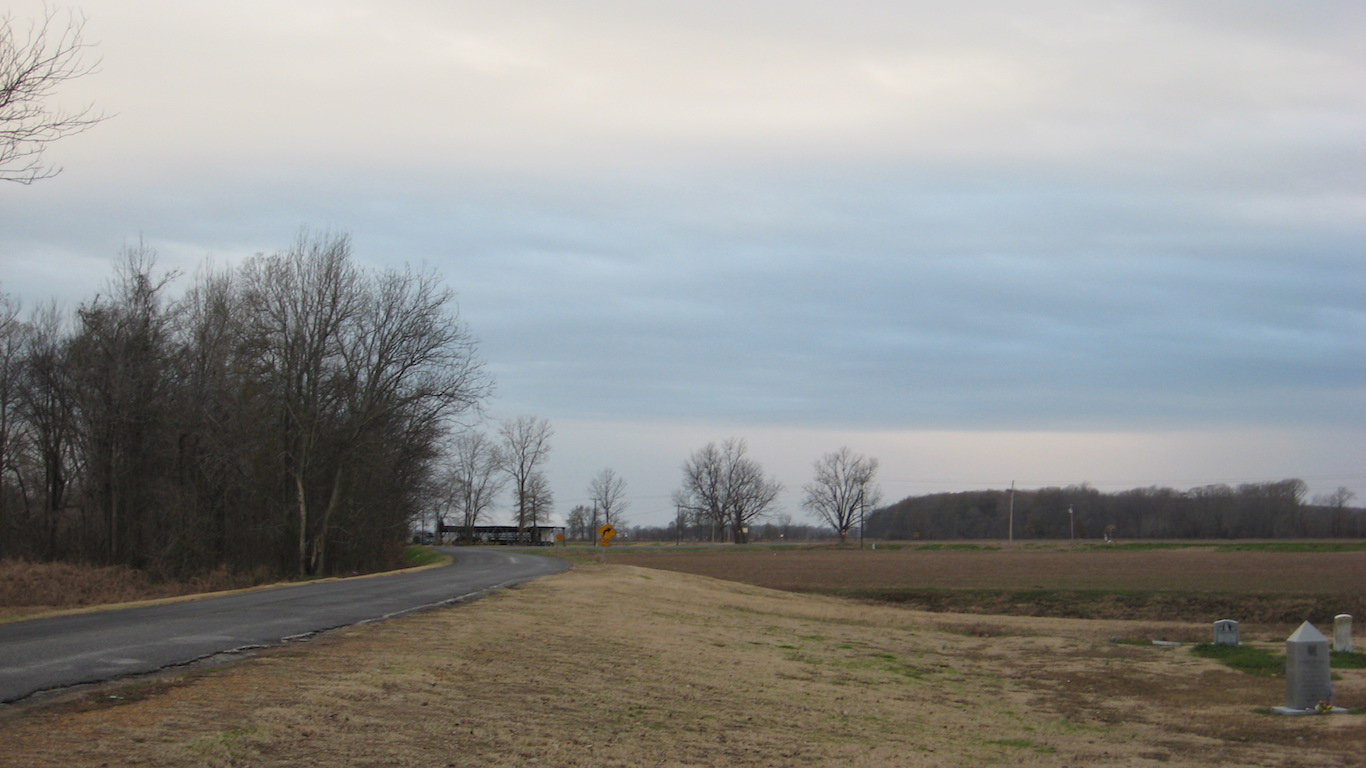
16. Leflore County, Mississippi
> Avg. income loss per year of childhood residence: -$236.32
> Household income per capita: $23,465
> Poverty rate: 34.8%
> Unemployment rate: 9.1%

15. Richmond City County, Virginia
> Avg. income loss per year of childhood residence: -$239.82
> Household income per capita: $35,536
> Poverty rate: 21.4%
> Unemployment rate: 4.2%
[in-text-ad]

14. Clarke County, Georgia
> Avg. income loss per year of childhood residence: -$241.54
> Household income per capita: $26,220
> Poverty rate: 28.3%
> Unemployment rate: 3.7%

13. Claiborne County, Mississippi
> Avg. income loss per year of childhood residence: -$242.03
> Household income per capita: $19,485
> Poverty rate: 32.4%
> Unemployment rate: 8.0%

12. Kusilvak Census Area, Alaska
> Avg. income loss per year of childhood residence: -$244.63
> Household income per capita: $19,557
> Poverty rate: 26.2%
> Unemployment rate: 15.1%
[in-text-ad-2]
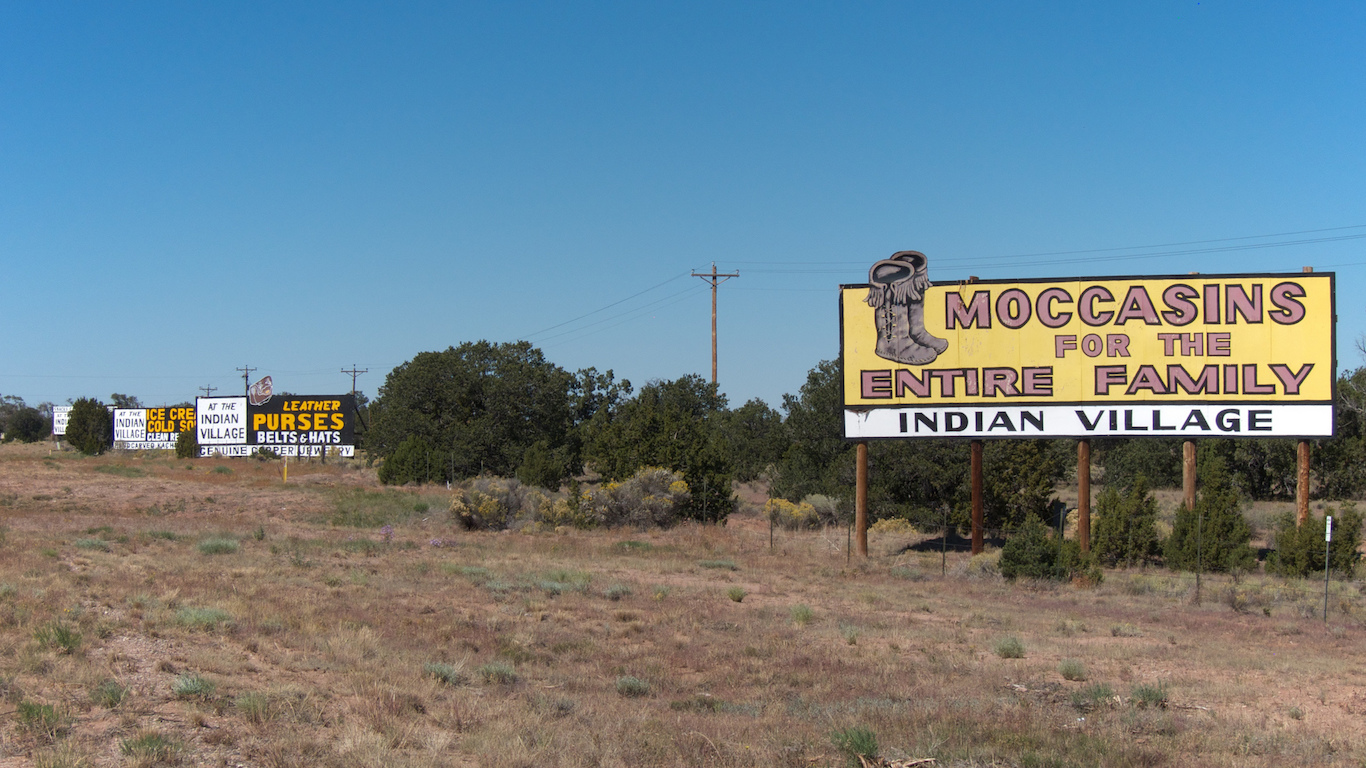
11. McKinley County, New Mexico
> Avg. income loss per year of childhood residence: -$247.58
> Household income per capita: $19,744
> Poverty rate: 36.1%
> Unemployment rate: 6.2%
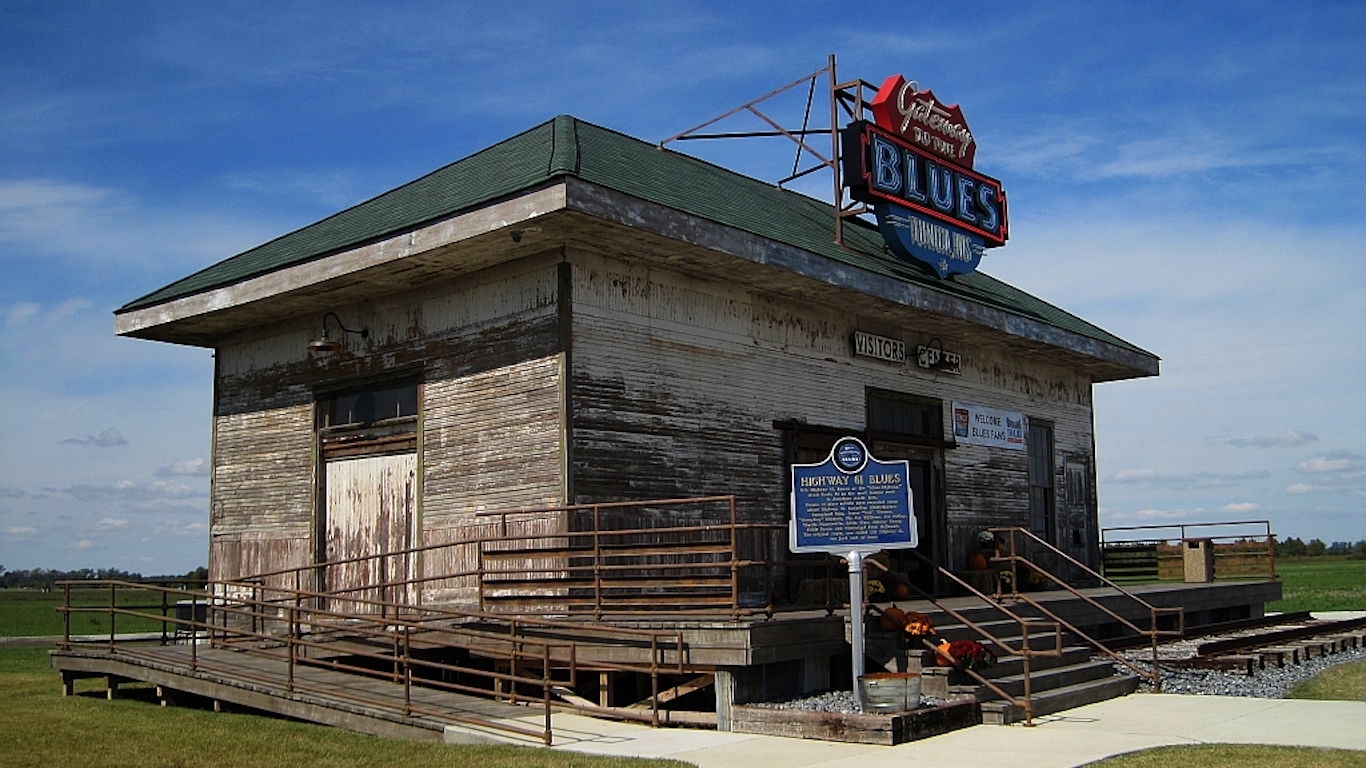
10. Tunica County, Mississippi
> Avg. income loss per year of childhood residence: -$249.41
> Household income per capita: $22,618
> Poverty rate: 33.1%
> Unemployment rate: 6.0%
[in-text-ad]

9. Humphreys County, Mississippi
> Avg. income loss per year of childhood residence: -$253.54
> Household income per capita: $21,846
> Poverty rate: 38.2%
> Unemployment rate: 10.8%

8. Glacier County, Montana
> Avg. income loss per year of childhood residence: -$263.48
> Household income per capita: $23,252
> Poverty rate: 27.3%
> Unemployment rate: 7.4%
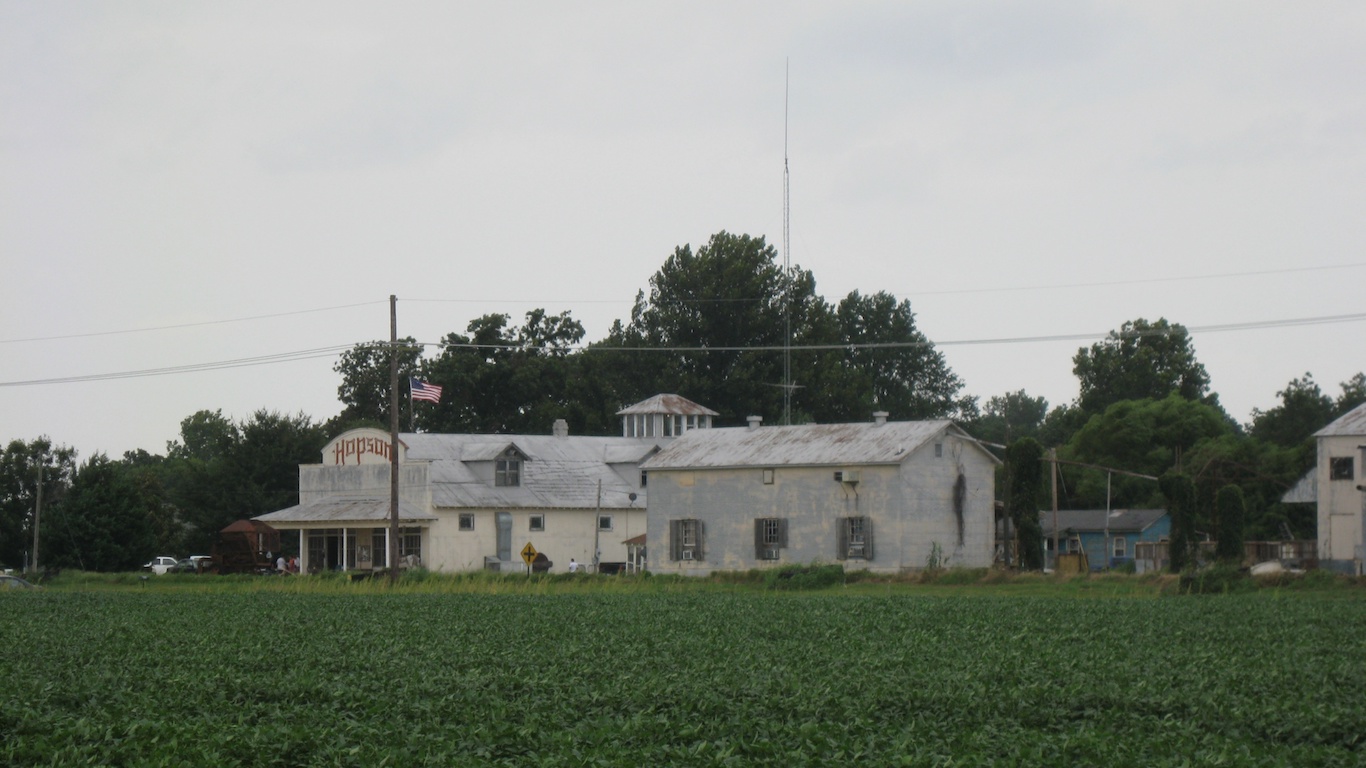
7. Coahoma County, Mississippi
> Avg. income loss per year of childhood residence: -$273.41
> Household income per capita: $25,675
> Poverty rate: 35.9%
> Unemployment rate: 7.4%
[in-text-ad-2]

6. Orleans County, Louisiana
> Avg. income loss per year of childhood residence: -$275.52
> Household income per capita: $31,246
> Poverty rate: 27.9%
> Unemployment rate: 5.4%

5. Forsyth County, North Carolina
> Avg. income loss per year of childhood residence: -$285.69
> Household income per capita: $41,647
> Poverty rate: 11.0%
> Unemployment rate: 4.7%
[in-text-ad]

4. Menominee County, Wisconsin
> Avg. income loss per year of childhood residence: -$313.34
> Household income per capita: $21,942
> Poverty rate: 28.8%
> Unemployment rate: 10.7%
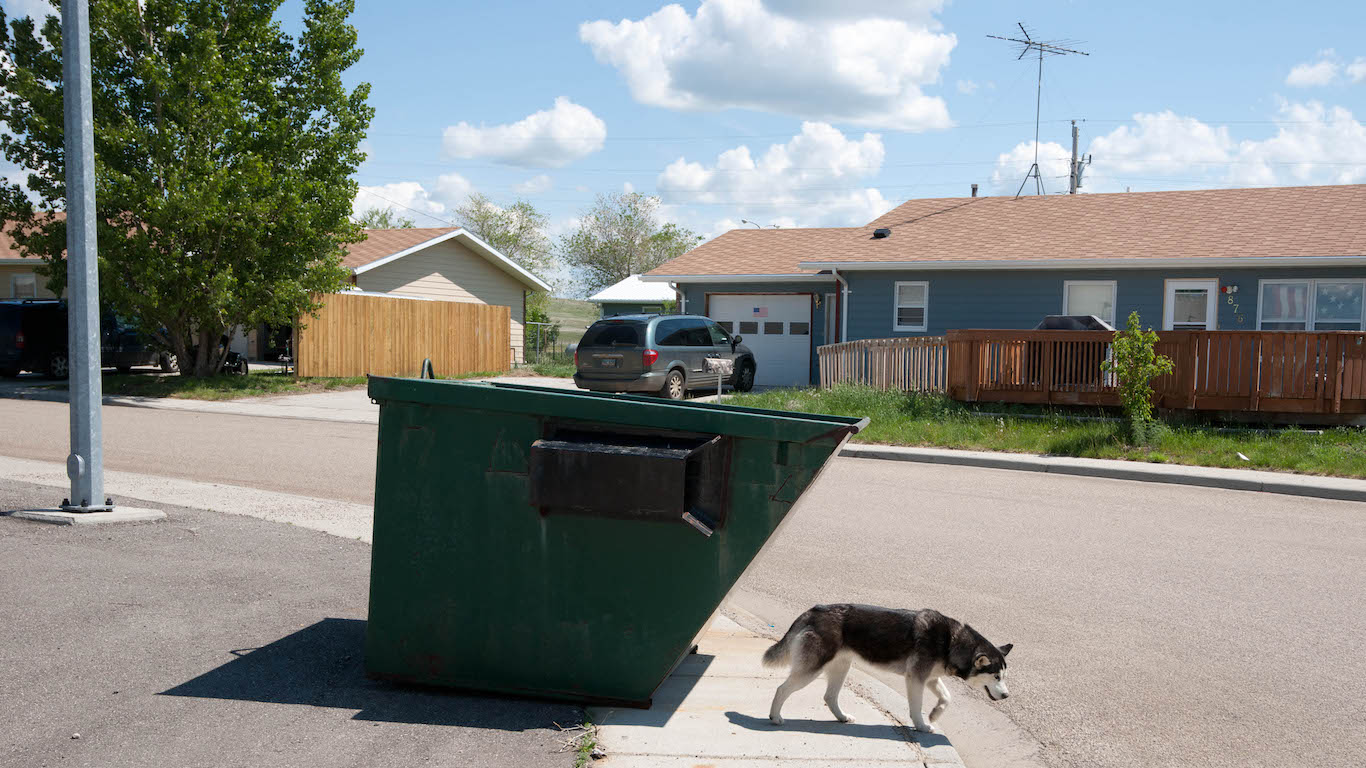
3. Sioux County, North Dakota
> Avg. income loss per year of childhood residence: -$318.34
> Household income per capita: $16,103
> Poverty rate: 39.2%
> Unemployment rate: 4.7%
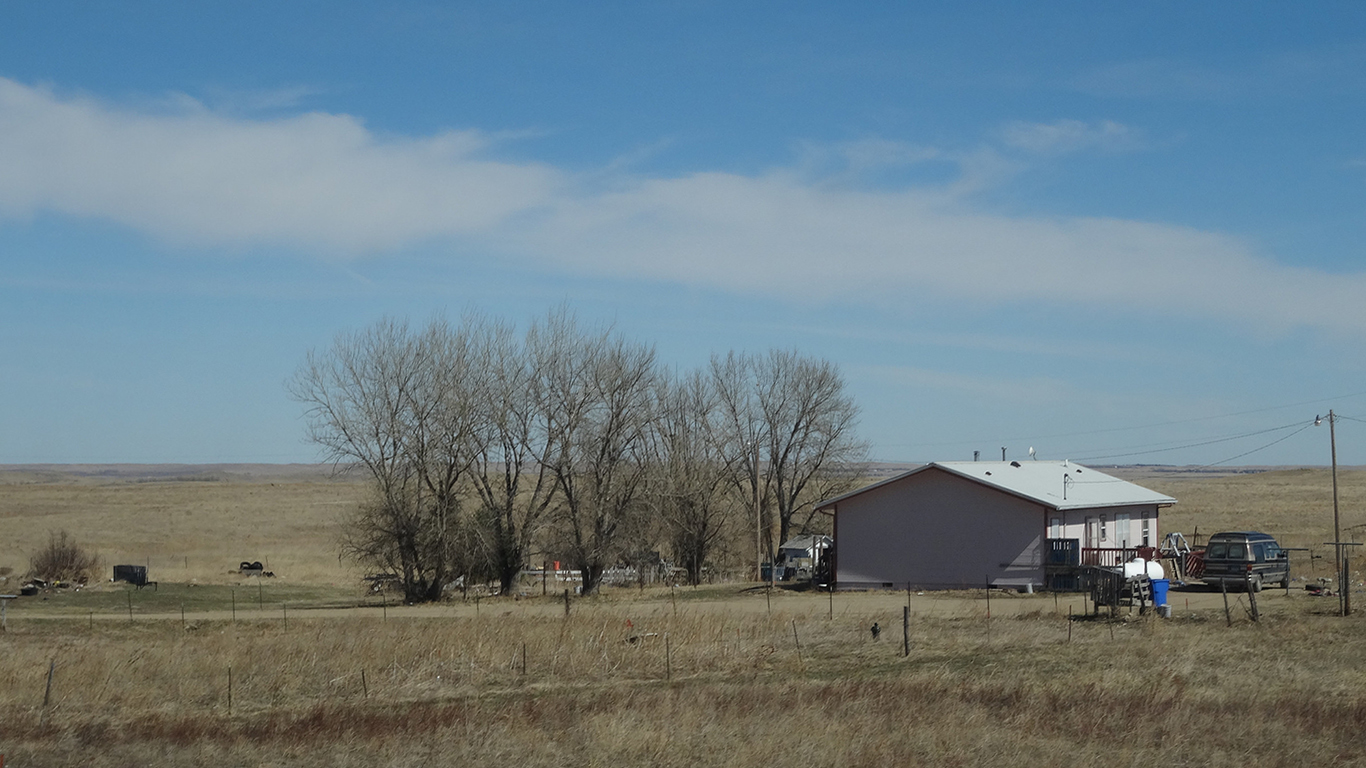
2. Todd County, South Dakota
> Avg. income loss per year of childhood residence: -$441.06
> Household income per capita: $16,641
> Poverty rate: 48.3%
> Unemployment rate: 5.2%
[in-text-ad-2]
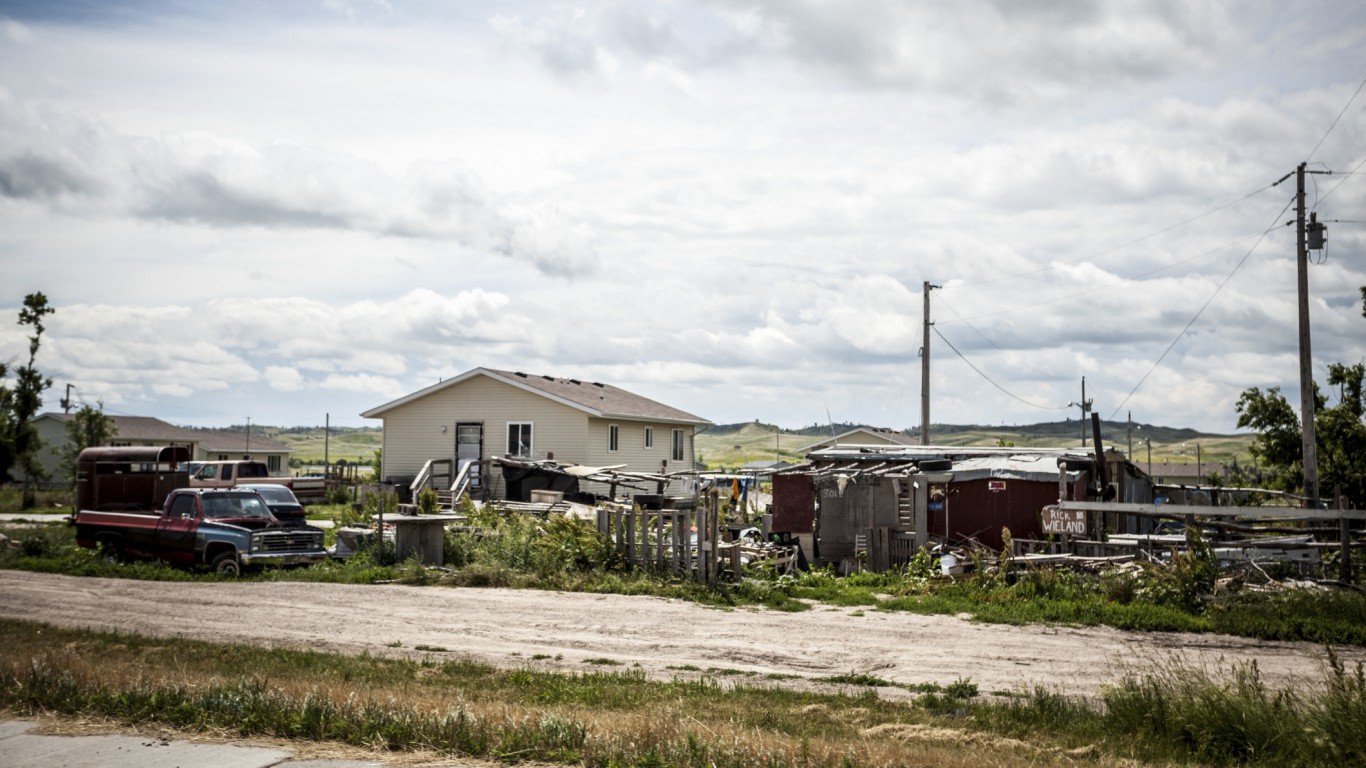
1. Oglala Lakota County, South Dakota
> Avg. income loss per year of childhood residence: -$483.97
> Household income per capita: $13,647
> Poverty rate: 52.3%
> Unemployment rate: 7.9%
METHODOLOGY
To identify the counties where the American dream is dead, 24/7 Wall St. reviewed the effect on household income earned in adulthood for every year of childhood spent in 2,973 U.S. counties from data published by The Equality of Opportunity Project. Researchers at the organization used de-identified data from 1996-2012 tax returns to study the long-term economic outcomes of approximately 50 million children.
This annual effect on adult earnings is called the exposure effect and is measured as the percent gained or lost from the average household income for a 26 year old in the bottom quartile of U.S. earners — $26,090. We calculated the average income lost for each county by multiplying the exposure effect by this national income threshold.
The Equality of Opportunity Project publishes economic mobility-related research and data files for public use. It receives funding from Stanford University, Harvard University, the National Science Foundation, and several charitable groups, including the Robert Wood Johnson Foundation.
Credit card companies are pulling out all the stops, with the issuers are offering insane travel rewards and perks.
We’re talking huge sign-up bonuses, points on every purchase, and benefits like lounge access, travel credits, and free hotel nights. For travelers, these rewards can add up to thousands of dollars in flights, upgrades, and luxury experiences every year.
It’s like getting paid to travel — and it’s available to qualified borrowers who know where to look.
We’ve rounded up some of the best travel credit cards on the market. Click here to see the list. Don’t miss these offers — they won’t be this good forever.
Thank you for reading! Have some feedback for us?
Contact the 24/7 Wall St. editorial team.